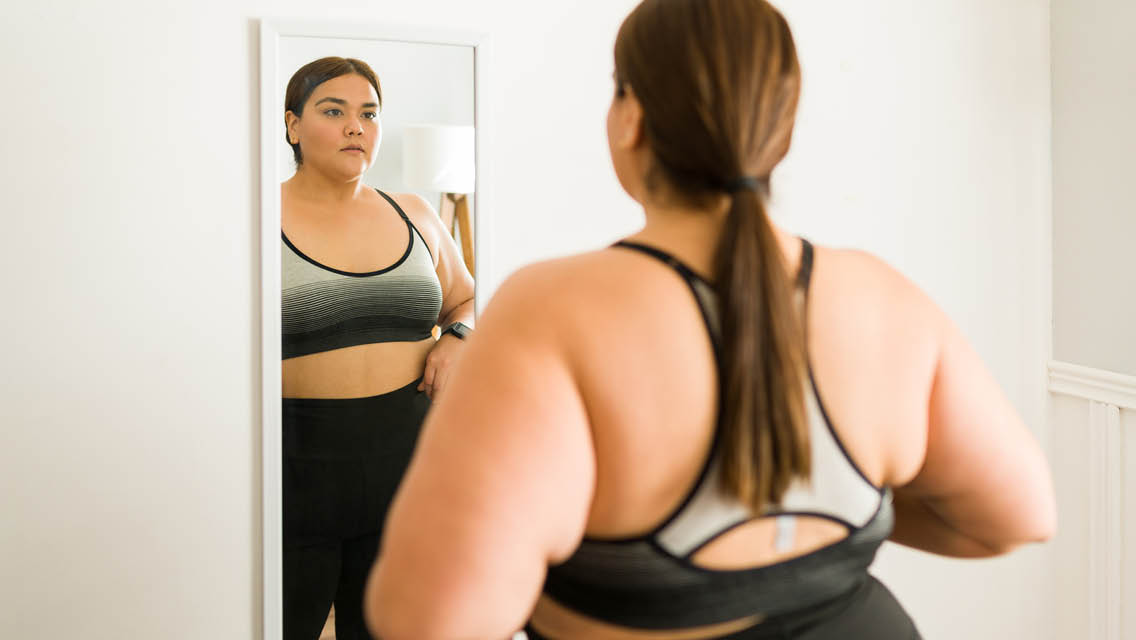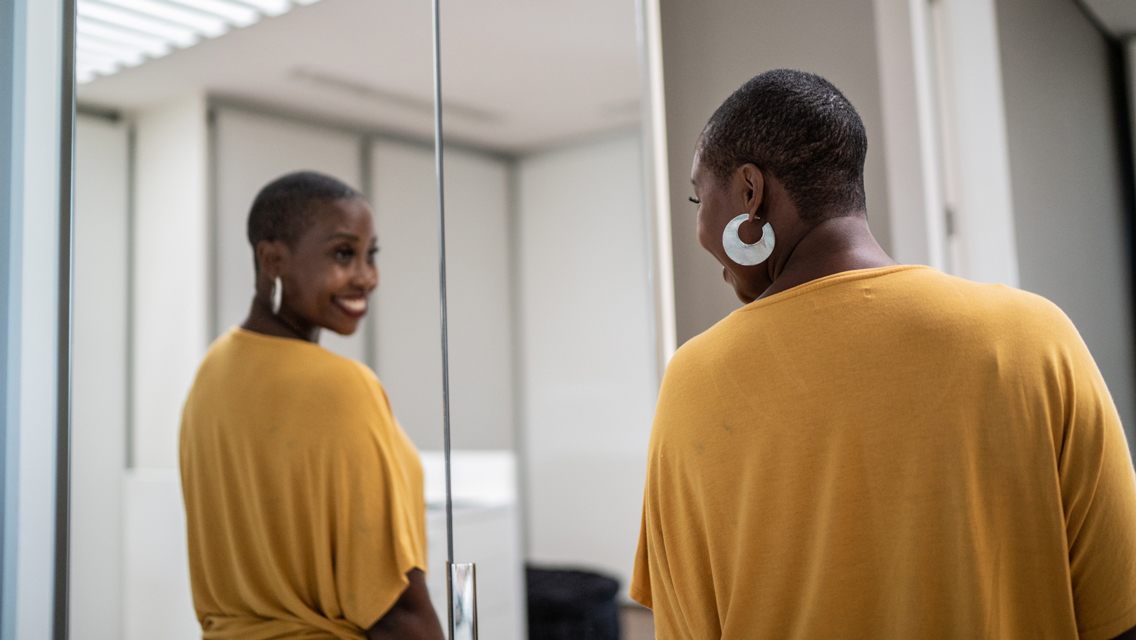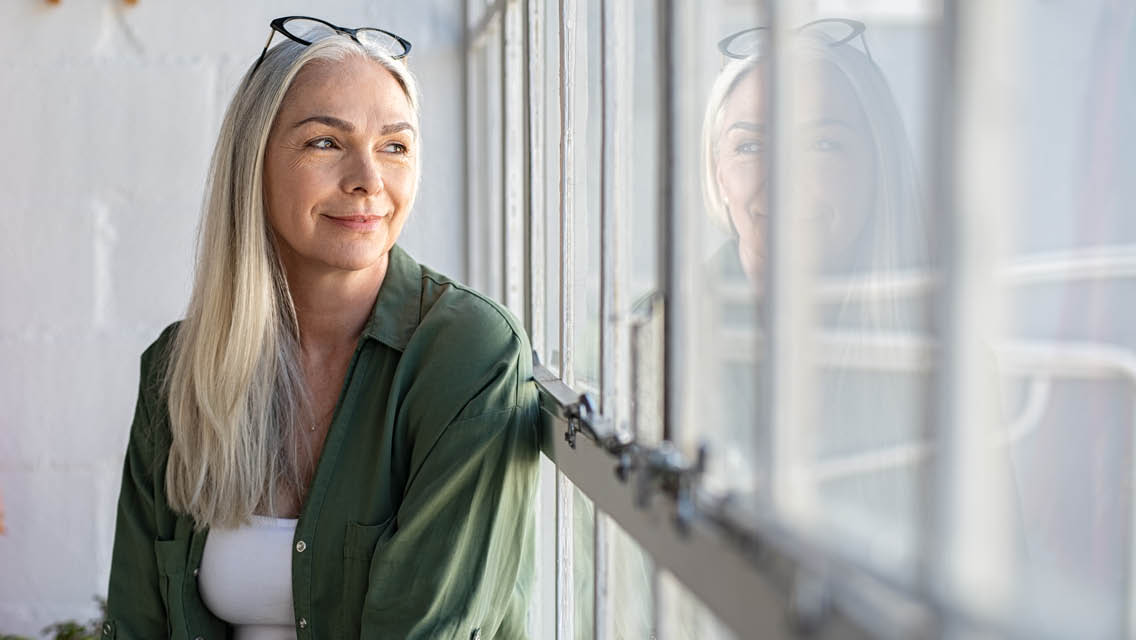We all exist within a body we did not choose for ourselves. And though we may appreciate many aspects of our physical selves, we may dislike or resent features that don’t align with our expectations or desires.
Similarly, our bodies evolve with time and use, in ways that we like — as well as in ways that we don’t. These perceived shortcomings or undesirable changes can stir up a complex of fraught emotions. Those feelings have a name: body grief.
Meredith Nisbet-Croes, MS, LMFT, CEDS-C, RYT-200, is a family therapist and eating disorders specialist who serves as the national clinical response manager for the Eating Recovery Center and Pathlight Mood and Anxiety Center. She defines body grief as “feelings of inadequacy, frustration, sadness, anger, or fear related to the natural state of our bodies, or to body changes.”
Like other forms of grief, she says, it’s a response to a loss: either the loss of a prior physical state (such as a stronger, more youthful state or a state prior to pregnancy or the development of a chronic illness) or the sense of loss that we may feel if we struggle to accept some characteristic of our bodies (like a physical disability or peculiarity).
The way to keep body grief from overwhelming us, she suggests, is to challenge the cultural bias that says that only one kind of body is healthy, attractive, and optimal — and to accept the fact that our bodies are always changing.
Stress Sources
Feeling uncomfortable in your body.
This is body grief: You’re inhabiting a body that, in Nisbet-Croes’s words, “doesn’t feel like your own.” She notes that people experiencing body grief might share similar emotions with people experiencing gender dysphoria, but she points out that the two differ in significant ways.
Gender dysphoria describes a condition in which one’s body does not reflect one’s gender identity. Body grief is a broader term that refers to the difficult emotions that arise when our bodies don’t align with our expectations or when they change in unwelcome ways.
Disappointment that your body doesn’t coincide with the cultural ideal.
Nisbet-Croes notes how the social pressure to fit today’s American body ideal — small-bodied, able-bodied, young, fit — can be overwhelming. The pressure can lead to feelings of inadequacy and severe self-judgment. (To help understand this pressure, read “An Indigenous Woman’s Journey to Decolonize Her Diet,” which is a personal narrative by Kate Nelson, an Alaska Native (Tlingit).)
Difficulty reconciling the reality of your body with the memory of what it used to be.
“This is something I speak with patients about pretty often,” says Nisbet-Croes. “They’ll say, ‘Oh, this picture came up from a holiday or a birthday several years ago, and I find myself looking at that photo and thinking, Gosh, I wish I still looked like I did then.’”
Feeling judged.
Friends, family, or other people in your life may make remarks that imply you aren’t taking care of your health or that you aren’t working hard enough to lose weight, to “overcome” your disability, or to become a vigorous “super senior.”
Feeling triggered when you hear others disparage their bodies or talk about diets, workouts, and physical abilities.
Body talk is ubiquitous, and even when it’s not directly judgmental toward you, it can be upsetting. (See “What Is Body Neutrality and How Can I Embrace It?” and “How to Halt Diet Talk” for more.)
Choosing not to participate in or enjoy certain things because of your body.
“Maybe you are no longer doing things you’ve always done that bring you joy because of body grief,” says Nisbet-Croes. “You don’t want to wear a bathing suit at the beach. You quit going to the gym. You dread the coming of warm weather because you want to keep your body covered. Maybe your life is starting to shrink.”
Success Strategies
1) Feel the grief.
As with any grieving process, trying to stuff it away or avoid it won’t work, Nisbet-Croes notes. We need to feel it and talk about it as well as take steps to keep it from immobilizing us. “I don’t think we’ve established stages of body grief,” she says. “But we know that it’s a process, often one step forward, two steps back. We’re not going to feel it in the same way every day.”
When emotions arise, take a moment to pause and reflect on them. Ask yourself nonjudgmental questions, including What am I feeling? and What triggered the emotion? Jotting some notes in a journal may help you process and release some of the emotions.
2) Accept physical change as a fact of life.
“If there’s one constant that you can count on, it’s that your body’s going to change,” Nisbet-Croes says. “We don’t necessarily know in what ways, but we know it’s going to. We’re sold this idea that our bodies shouldn’t change, or if they do, it has to be in one specific, acceptable way.”
Practicing body-scan meditations — training yourself to feel present in your body and aware of how it feels — can help ground you when you’re feeling unsettled or disconnected. “If we can lean into the change, go on the journey accepting our humanity and the inevitability of change, then those days when it feels hard to be in our physical form become a little easier.” (You can also explore these six transformative strategies to start practicing body neutrality.)
3) Challenge distressing thoughts and beliefs.
A great way to get back on an even keel when you’re feeling body grief is to consider the wider context. “When you look at that picture of the thin, or prepregnancy, or able-bodied younger you,” she says, “you can ask yourself, What about the miserable relationship I was in then? How about the fact that I have created and raised a wonderful daughter? What about the friends I have today? Your life is greater than your body.”
4) Diversify your social media, avoiding content that triggers you.
Many of the most-followed social media accounts feature thin, able-bodied, cisgender, straight, and white bodies, which reinforces the idea that only these bodies are attractive and desirable.
“You need to ask yourself, How can I diversify the content I’m taking in so that I get used to seeing bodies that aren’t the same as the ‘ideal’?” Nisbet-Croes advises. “Doing that helps your brain learn there is bodily variety, and you can start to combat some of that marketing messaging that says you have to look a certain way to be worthy.” (Check out “The Do’s and Don’ts of Following “Fitfluencers”” for more.)
5) Set boundaries around body talk.
If people who really care about you are engaging in body talk, Nisbet-Croes suggests, set boundaries gently. “You can say, ‘Hey, it’s really hard for me when you talk about how we’ve got to take a walk to work off this food that we just ate. I’m working hard to neutralize my relationship with food. Could we talk about something else?’ If the other person is less receptive to that approach, by all means excuse yourself to visit the bathroom, or go outside to call a friend.”
6) Define health broadly.
The idea that any body is unhealthy by definition needs to be challenged, Nisbet-Croes points out. “Marketing has decided that health is only weight and appearance,” she says.
“What I encourage people to do is step back and ask, What are all the things that make up health? Moving your body is important. Eating healthily means eating a variety of food, eating foods you enjoy, [and] eating regularly, in adequate portions. And there are other important factors, like healthy relationships, mental health, financial health.”
7) Appreciate what your body can do and find ways to move that feel good.
Everyone has their own unique strengths and growth opportunities. Engaging in fun, enjoyable movement that supports your health can help you feel more present in your body and grateful for what it can do — which can also help you separate from the grief and loss.
“If we can step back from our negative emotions,” Nisbet-Croes says, “we can find that there’s newness there that can be joyful and fulfilling, just maybe in a different way than we pictured.”
Renewal
For more inspiration and strategies to overcome life’s challenges, please visit our Renewal department.
This article originally appeared as “The Challenge of Body Grief” in the July/August 2024 issue of Experience Life.





This Post Has One Comment
Great article. Made me stop and think about A LOT. So well written — everyone should read this!